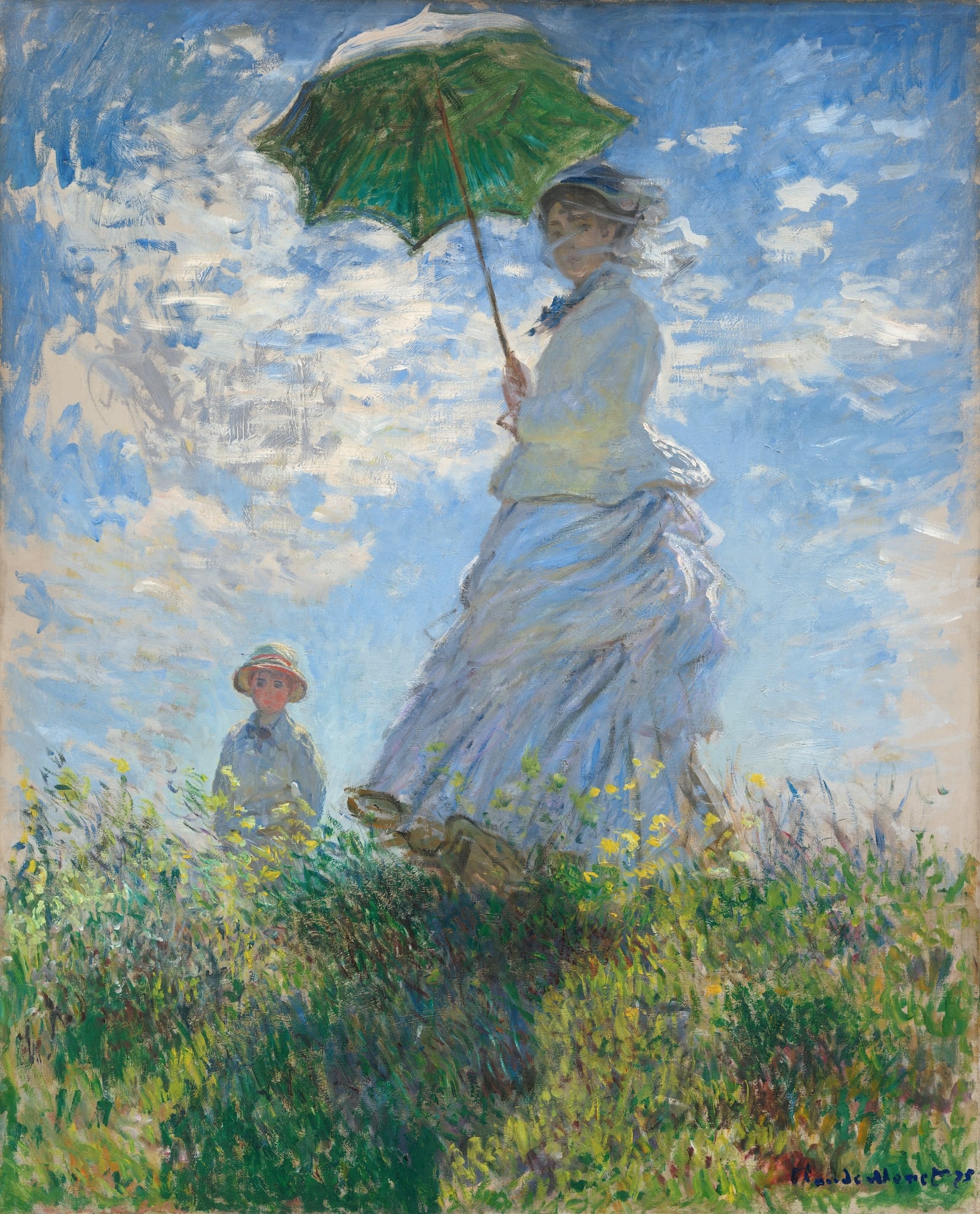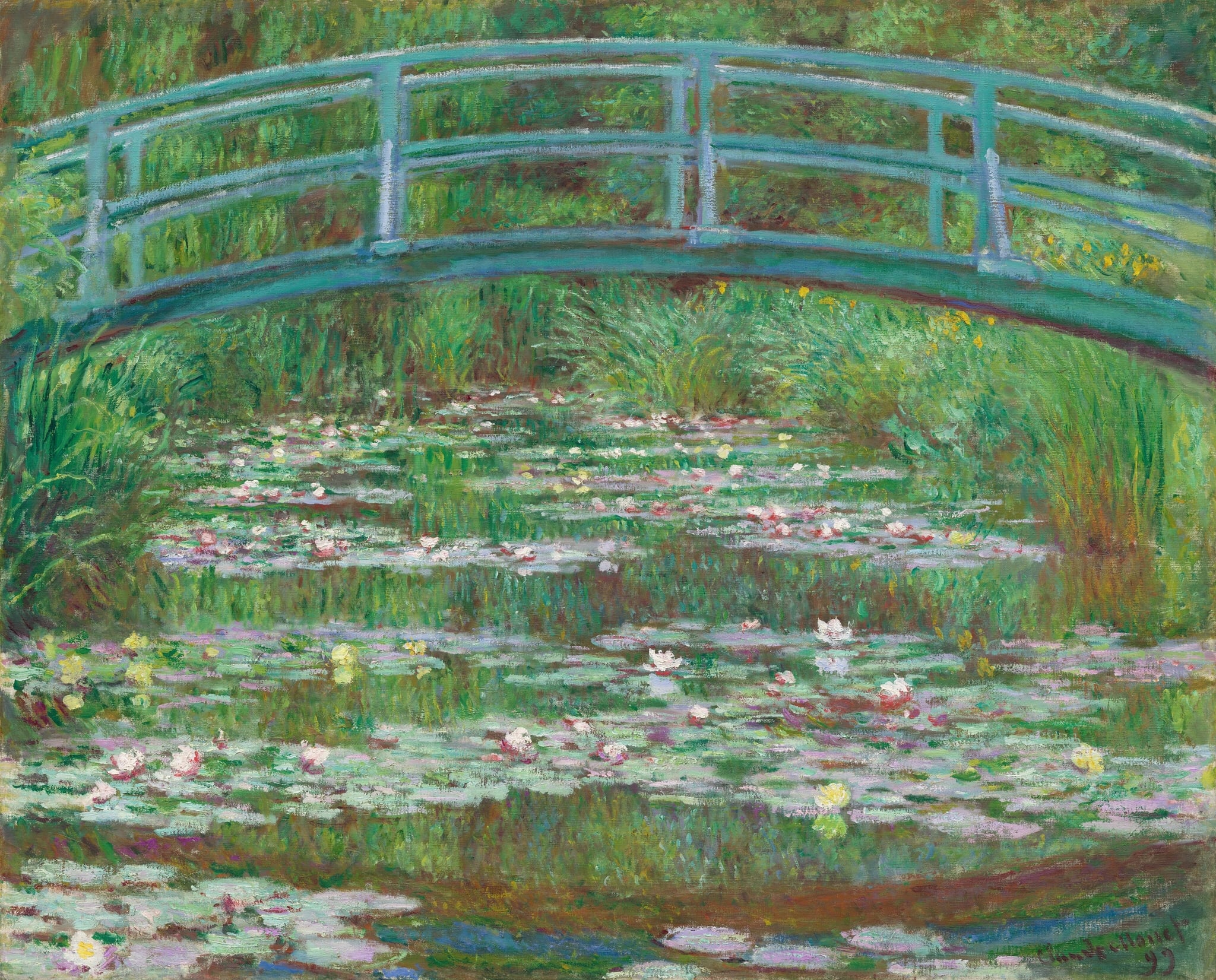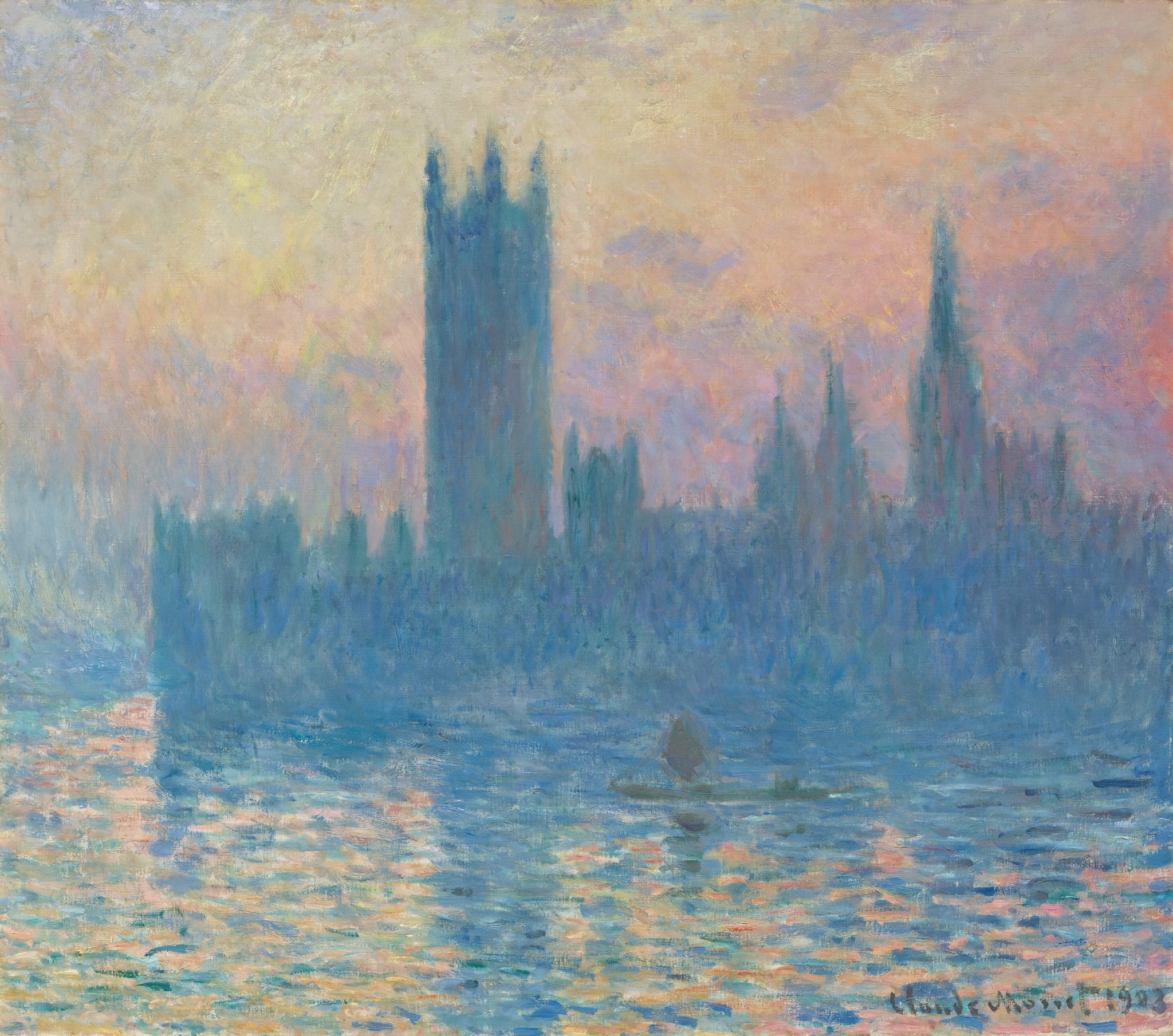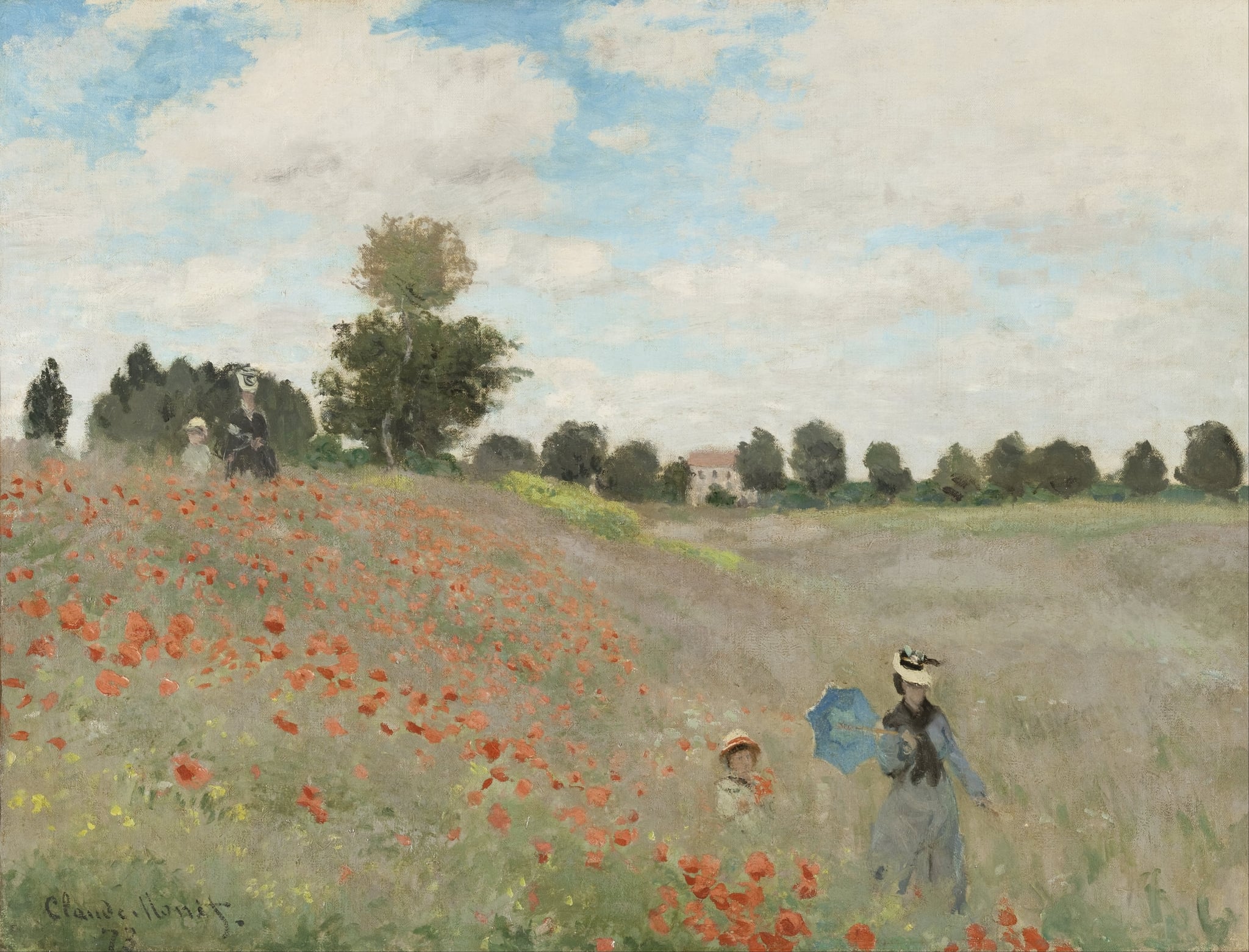Rouen Cathedral Series
by Claude Monet
Fast Facts
- Year
- 1894
- Medium
- Oil on canvas
- Dimensions
- 99.7 × 65.7 cm (39 1/4 × 25 7/8 in)
- Location
- The Metropolitan Museum of Art, New York

Click on any numbered symbol to learn more about its meaning
Meaning & Symbolism
The meaning of Rouen Cathedral Series is a meditation on permanence versus transience: medieval masonry appears to dissolve into momentary atmospheres, so that vision itself becomes the sacred experience. It matters because Monet systematized seriality—moving among canvases as effects shifted—thereby advancing a modern, subjective account of seeing and exhibiting the set as a calibrated ensemble in 1895 127. This approach reframed a national, religious emblem as a secular screen for light, aligning Impressionism with modern optical truth rather than iconographic narrative 468. That is why Rouen Cathedral Series is important to the development of modern art and later serial practices 9.
Across the Rouen Cathedral Series, Monet strips Gothic architecture of fixed outlines and rebuilds it as an instrument that registers sunlight’s changing temperature. In the pictured canvas, the west façade rises like a pale flame: thick, broken strokes allow buttresses and arches to breathe, the upper gable’s crenellations tremble against an immaculate blue, and the central portal blooms in bands of violet and gold. A small, orange note at the rose window concentrates warmth at the motif’s core, while three diminutive figures at the lower left counterbalance the vastness of the stone stage. These decisions are not decorative; they assert that the façade functions as a sensor of the day’s phases—chill blues tipping into heated creams—so that the painting records time passing as chromatic vibration. Monet painted from high windows opposite the square, rotating among canvases as effects shifted, then harmonized them in the studio, effectively turning repetition into an engine for difference 125. By refusing architectural finish—tracery softens, edges fray—Monet dislodges the cathedral from ecclesiastical certainty and re-situates it within the unstable field of perception. The stone’s vaunted permanence meets a flickering atmosphere; the encounter dissolves hierarchy and redistributes meaning from carved iconography to optical event. In 1890s France, Gothic revivalism charged such monuments with national and spiritual symbolism; Monet counters by secularizing the motif into pure effects, a move critics recognized as a revolution of seeing 48. The series thus articulates a modern creed: reality is not what objects are, but how they appear under contingent conditions. That credo is staged here through color-keyed “episodes”—sunlight, gray weather, blue-and-gold harmonies—each canvas functioning as a time-slice, while the ensemble (exhibited as twenty paintings at Durand‑Ruel in 1895) operates like a visual fugue in which themes recur and transform 167. This serial method carries historical consequence. Monet’s disciplined alternation among canvases collapses plein-air observation and studio orchestration into a single, iterative process—an innovation that later artists would seize upon when exploring repetition, variation, and systems. The Rouen Cathedrals anticipate twentieth-century seriality from Minimalism to Pop; their optical atomization even finds a distant echo in Roy Lichtenstein’s mechanized “Cathedral” prints, which translate Monet’s shimmering facture into screen-printed dots 9. In this picture, the granular brushwork makes the façade scintillate as if woven from air, asserting that the stability we attribute to the world is a negotiated perception. That is the series’ lasting proposition: the sacred has migrated from subject matter to the act of light itself—an argument forged through the concrete, local facts of a blue sky, a glowing rose, and a handful of passersby who bear witness to time’s quiet blaze 1246.Citations
- The Metropolitan Museum of Art — Rouen Cathedral: The Portal (Sunlight), 1894
- National Gallery of Art — Rouen Cathedral, West Façade, Sunlight, 1894
- Clark Art Institute: Rouen Cathedral, the Façade in Sunlight
- Musée d’Orsay — La Cathédrale de Rouen (various versions, effects and harmonies)
- Musée des Beaux‑Arts de Rouen — Le Portail et la tour d’Albane. Temps gris
- MFA Boston: Rouen Cathedral Façade and Tour d’Albane (Morning Effect)
- Joachim Pissarro, Monet’s Cathedral: Rouen, 1892–1894 (1990)
- Washington Post — What makes Monet’s Rouen Cathedral paintings so radical
- LACMA — Monet/Lichtenstein: Rouen Cathedrals (exhibition press)
- Encyclopaedia Britannica: Claude Monet
- MFA Boston — Rouen Cathedral Series overview
Explore Deeper with AI
Ask questions about Rouen Cathedral Series
Popular questions:
Powered by AI • Get instant insights about this artwork
Interpretations
Historical Context
Source: The Metropolitan Museum of Art; Musée des Beaux‑Arts de Rouen; Washington Post
Formal Analysis
Source: National Gallery of Art; The Metropolitan Museum of Art
Religious/Spiritual
Source: Musée d’Orsay; Washington Post
Social Commentary
Source: Musée des Beaux‑Arts de Rouen; National Gallery of Art; LACMA
Reception History
Source: The Metropolitan Museum of Art; LACMA
Biographical/Methodological
Source: The Metropolitan Museum of Art; MFA Boston; LACMA
Related Themes
About Claude Monet
More by Claude Monet

Haystacks Series by Claude Monet | Light, Time & Atmosphere
Claude Monet
Claude Monet’s <strong>Haystacks Series</strong> transforms a routine rural subject into an inquiry into <strong>light, time, and perception</strong>. In this sunset view, the stacks swell at the left while the sun burns through the gap, making the field shimmer with <strong>apricot, lilac, and blue</strong> vibrations.

The Artist's Garden at Giverny
Claude Monet (1900)
In The Artist's Garden at Giverny, Claude Monet turns his cultivated Clos Normand into a field of living color, where bands of violet <strong>irises</strong> surge toward a narrow, rose‑colored path. Broken, flickering strokes let greens, purples, and pinks mix optically so that light seems to tremble across the scene, while lilac‑toned tree trunks rhythmically guide the gaze inward <sup>[1]</sup><sup>[3]</sup>.

Woman with a Parasol
Claude Monet (1875)
Claude Monet’s Woman with a Parasol fixes a breezy hillside instant in high, shifting light, setting a figure beneath a <strong>green parasol</strong> against a vast, vibrating sky. The low vantage and <strong>broken brushwork</strong> merge dress, clouds, and grasses into one atmosphere, while a child at the rise anchors depth and intimacy <sup>[1]</sup>. It is a manifesto of <strong>plein-air</strong> perception—painting the sensation of air in motion rather than the contours of things <sup>[2]</sup>.

The Japanese Footbridge
Claude Monet (1899)
Claude Monet’s The Japanese Footbridge turns his Giverny garden into an <strong>immersive field of perception</strong>: a pale blue-green arc spans water crowded with lilies, while grasses and willows dissolve into vibrating greens. By eliminating the sky and anchoring the scene with the bridge, Monet makes <strong>reflection, passage, and time</strong> the picture’s true subjects <sup>[1]</sup><sup>[2]</sup>.

Houses of Parliament
Claude Monet (1903)
Claude Monet’s Houses of Parliament renders Westminster as a <strong>dissolving silhouette</strong> in a wash of peach, mauve, and pale gold, where stone and river are leveled by <strong>luminous fog</strong>. Short, vibrating strokes turn architecture into <strong>atmosphere</strong>, while a tiny boat anchors human scale amid the monumental scene.

Poppies
Claude Monet (1873)
Claude Monet’s Poppies (1873) turns a suburban hillside into a theater of <strong>light, time, and modern leisure</strong>. A red diagonal of poppies counters cool fields and sky, while a woman with a <strong>blue parasol</strong> and a child appear twice along the slope, staging a gentle <strong>echo of moments</strong> rather than a single event <sup>[1]</sup>. The painting asserts sensation over contour, letting broken touches make the day itself the subject.